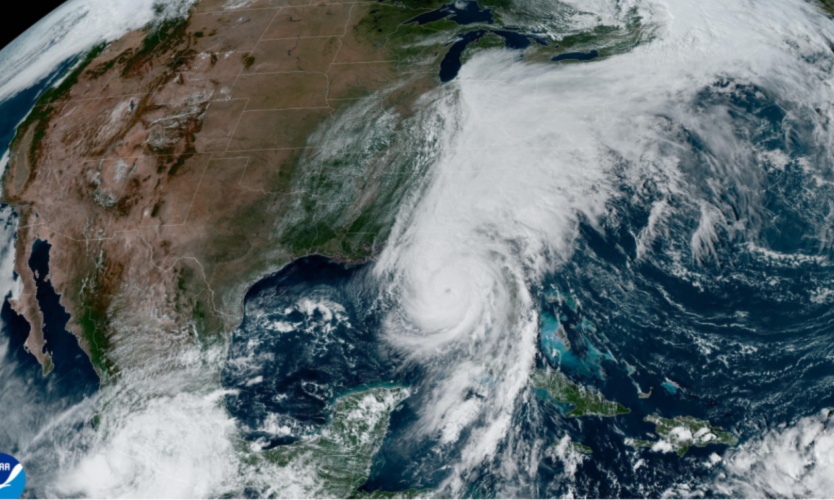Property insurance buyers see lower prices at renewals
- July 5, 2025
- Posted by: Web workers
- Category: Workers Comp

Commercial property insurance rate decreases accelerated at midyear renewals, particularly for accounts with heavy catastrophe exposure, driven by ample capacity and increased competition.
Despite global natural catastrophe insured losses exceeding $50 billion in the first quarter — the second-highest first-quarter total on record — insurers deployed additional capacity on programs, and terms and conditions improved through June.
Buyers should continue to see rate reductions accelerate in the second half of the year, though a major hurricane or tariff-related increases in replacement costs could affect capacity and pricing, brokers say.
Property market softening accelerated through the second quarter, said Vincent Flood, New York-based U.S. property practice leader at Aon PLC.
The average rate reduction on Aon’s national property book in the second quarter was over 12% through May 1, and some accounts saw reductions up to 30%, he said. Aon’s average property rate reduction was 8.5% in the first quarter.
Single-insurer accounts are seeing high-single-digit to low-double-digit rate decreases, while rate reductions for shared and layered programs are in the mid- to high-teens, Mr. Flood said.
Some programs are 200% subscribed. “When you’re oversubscribed by 100% that naturally puts downward pressure on pricing – it’s simply a matter of supply and demand,” he said.
The market is the most competitive it has been in several years, said Gregory Mann, Atlanta-based U.S. property placement leader for Marsh LLC.
Expanding capacity
In the past five years, insurers have reunderwritten and rerated their property books, Mr. Mann said. Insurers are now taking a technical rate that can absorb significant market losses in the $125 billion to $150 billion range, he said.
Insurer growth goals are driving increased capacity, leading to more competitive pricing. “Each of these markets have growth goals, anywhere from 5% to 15%. That’s simply adding capacity into the market and changing the supply and demand curve. Because of that, insureds have more options,” Mr. Mann said.
Some new managing general agency capacity has entered the market and is participating on programs, he said.
Shared and layered catastrophe-driven placements are seeing oversubscription across the board, in multiple layers, said Martha Bane, Glendale, California-based senior managing director of the North America property practice at Arthur J. Gallagher & Co.
“It’s giving our clients options with respect to improving terms and conditions and pricing and eliminating non-concurrencies that we’ve had in our programs for the past couple of years,” she said.
Most insurers are willing to offer additional capacity, Ms. Bane said. “We’re seeing carriers who traditionally may not have participated in a primary layer now offering primary terms, which is a difference from earlier in the year,” she said.
Shared and layered programs in hurricane-exposed coastal areas saw the largest rate decreases in the first half of the year, said Jeff Buyze, Orlando, Florida-based vice president, national property practice leader, at USI Insurance Services LLC.
Those risks also saw the biggest rate increases in the past five years. “It’s a correction,” Mr. Buyze said. One of USI’s largest property accounts saw a rate decrease of over 30% this year, he said.
Pockets of market disruption remain, however. Wildfire-exposed accounts in California face a difficult market, and in the Midwest deductibles continue to increase because of severe convective storm risks, Mr. Buyze said.
“We are still seeing some pain points in those areas compared to what we’re seeing in Texas, Florida and the Carolinas,” he said.
Southwire Co. was expecting a mid-single-digit increase on its single-carrier property program that renewed June 30, after a double-digit increase the prior year, said Tamieka Weeks, director of global risk management and insurance at the Carrolton, Georgia-based wire and cable manufacturer.
Southwire, a family-owned company, has nearly 90 locations in the U.S. and internationally.
Market conditions are stable, said Ms. Weeks, who is also a Risk & Insurance Management Society Inc. board member. “We didn’t have any challenges with limits or capacity with the market,” she said.
Accurate property valuations, effective communication with insurers and early preparation for catastrophes such as hurricanes are vital, she said.
Alternatives and retentions
Despite the improving market conditions, buyers are still retaining more risk, brokers said.
Insurers remain disciplined on deductibles, Mr. Mann said. Some buyers have explored deductible buybacks or options to reduce percentage deductibles either by capping them or paying extra, “but insurers in general are trying to hold off on that,” he said.
“Lowering deductibles and retentions are probably the exception and not the rule,” Mr. Flood said. “If there’s an opportunity to lower retentions,” buyers will take that, “but they’re not going to forego premiums savings for it,” he said.
Clients are considering all of their options, including captives and parametric coverage, Ms. Bane said. “We continue to see an increased interest in parametrics, especially when it comes to filling those gaps for climate-related risk,” she said.
Aon just placed a large parametric tornado coverage for a client because traditional market limits were not available, Mr. Flood said. “It was a builder’s risk policy and there was a limit that those insurers would provide and so we had to top it up. The only way to do that was through a parametric,” he said.



